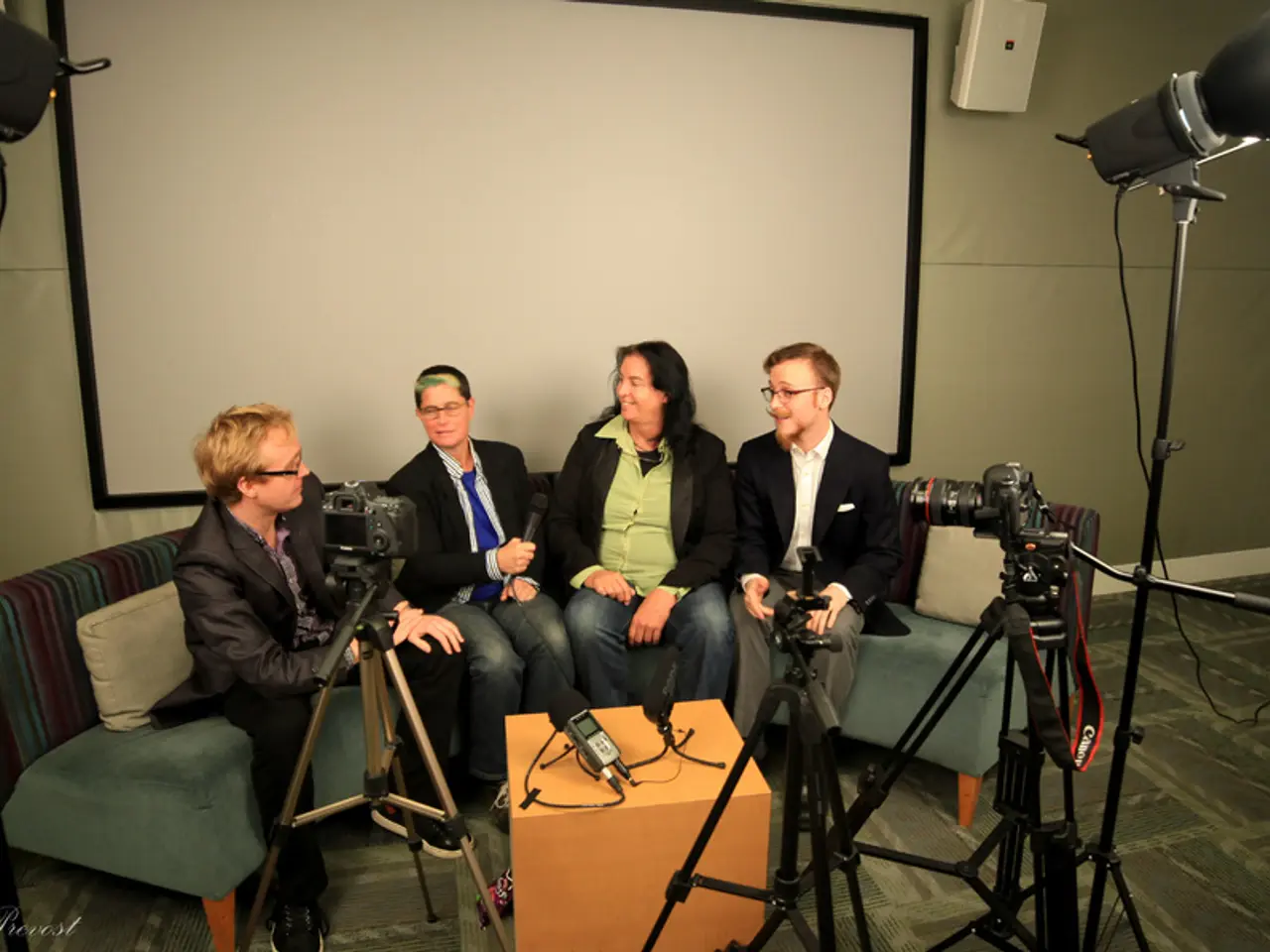Preparing for a User Interview: Asking the Right Inquiries Effectively
In the realm of user research, conducting insightful interviews is crucial to understanding user needs and behaviors. Here's a step-by-step guide on creating an effective user interview guide.
Defining Clear Research Objectives
Start by identifying what specific insights you need to gather. These objectives should guide the development of your questions and ensure that your research is focused and purposeful. Define them clearly and concisely, ensuring they are specific enough to guide question development but flexible enough to allow for unexpected discoveries during conversations.
Capturing Participant Background and Context
Capture essential details about who you are interviewing and their relationship to your product or problem space. This information helps tailor questions and interpret responses accurately.
Structuring the Question Flow
Organize questions in a logical order to guide the conversation. Begin with broader, context-setting questions and gradually focus on specific scenarios or experiences you want to explore. This structure helps participants feel comfortable sharing their insights and ensures that your sessions are productive.
Example Structure:
- Introduction and Warm-Up: Questions like "Can you tell me about your role?" or "How did you first hear about our product?"
- Background Information: Questions about their past experiences or current habits related to your product or service.
- Behavioral Insights: Questions like "Can you describe a recent time when you used our product?" or "How do you currently handle [specific task]?"
- Specific Scenarios: Questions that delve into specific features or challenges, such as "How do you feel about [new feature]?" or "What challenges do you face when using [specific tool]?"
- Closing and Follow-Up: Open-ended questions to allow participants to share any additional thoughts or feedback.
Ensuring Ease of Participant Response
Ensure questions are clear, concise, and easy to understand. Avoid using jargon or technical terms that might confuse participants. Use a neutral tone and test your questions in a pilot interview to refine them.
Recording the Session
If possible, record the interview with the participant's consent. This helps in capturing direct quotes and observations that might be missed in notes alone.
Follow-Up and Action Planning
Build in space for documenting immediate next steps, additional research needs, and key insights to share with stakeholders. This ensures your research findings influence product decisions effectively.
Practical Considerations
When conducting user interviews, consider practical aspects such as deciding on the user group, recruitment, location, and recording method. In a qualitative study, the overall research question can be broad and exploratory.
Additional Resources
For more insights, read the article from the Nielsen Norman Group about the benefits of asking lots of open-ended questions in user research. Stakeholders should be involved in the design of the interview project to ensure stakeholder buy-in. The interview guide should be tested before the interview to ensure it can deliver the promised insights.
Remember, the interview guide serves as a script for the interview and ensures that promised insights are delivered. Instead of asking directly how video streaming fits into participants' everyday lives, it's better to ask about specific instances like "Can you tell me about the last time you used video streaming?" or "How have your movie/TV-watching habits changed since you started using video streaming services?"
Concrete "how" and "what" questions should be asked before abstract "why" questions during an interview. The grounded theory methodology suggests letting the results guide the number of participants. In a semi-structured interview, the interviewer has a carefully laid plan but also allows the flow of the conversation to decide how and when to ask questions.
The number of participants in an interview project varies depending on the study, resources, and the point of information saturation. For a deeper understanding of qualitative research interviewing, refer to the books "InterViews: Learning the Craft of Qualitative Research Interviewing" by Steinar Kvale and Svend Brinkmann and "Qualitative HCI Research: Going Behind the Scenes" by Ann Blandford, Dominic Furniss, and Stephann Makri.
In summary, by following these steps, you can create an effective user interview guide that elicits valuable insights and enhances your understanding of user needs and behaviors. The quote by Sylvia Earle, a renowned marine biologist, aptly sums up the spirit of user research: "Scientists and explorers have attributes of children, asking questions and having a sense of wonder and curiosity."
Read also:
- Amazon customer duped over Nvidia RTX 5070 Ti purchase: shipped item replaced with suspicious white powder; PC hardware fan deceived, discovers salt instead of GPU core days after receiving defective RTX 5090.
- Twitter profile activity of user 'peng' shows a significant increase in Hong Kong, amidst preparations for the fourth-quarter launch of an extended-range Twitter profile feature
- GPS Tracking System Unveiled by RoGO Communications for Wildland Firefighting Operations
- 17 Tech Gadgets and Add-Ons Permanently Taking Up Space in My Mental Realm








